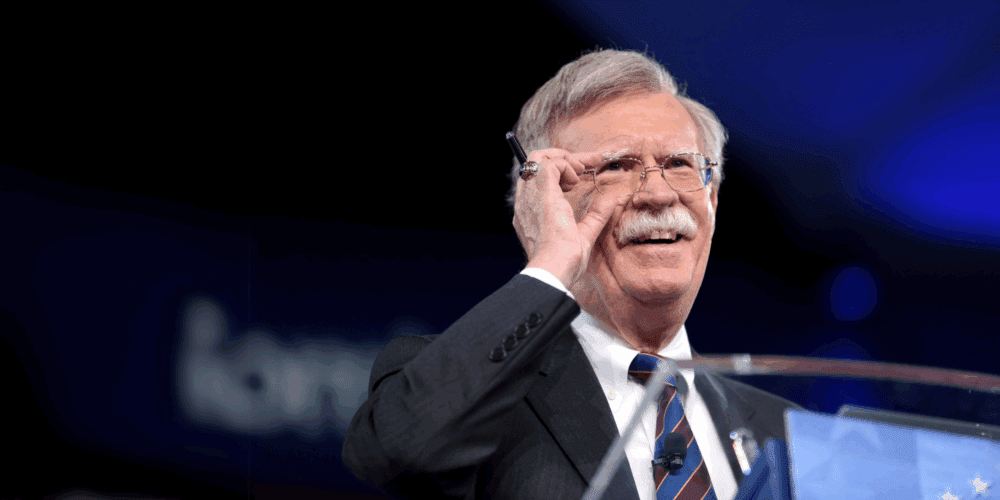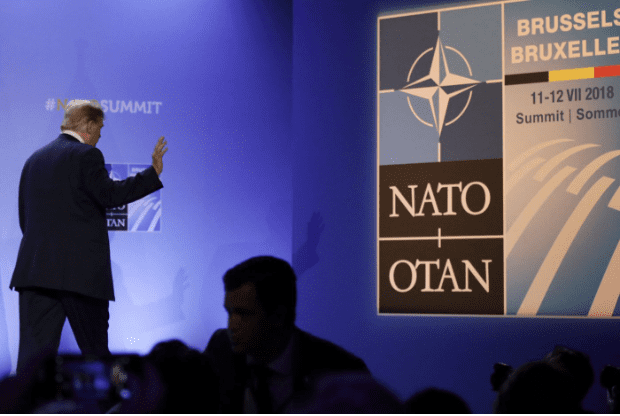Donald Trump’s Ukraine policy today is no more coherent than it was last Friday when his administration executed search warrants against my home and office. Collapsing in confusion, haste, and the absence of any discernible meeting of the minds among Ukraine, Russia, several European countries, and America, Trump’s negotiations may be in their last throes(https://www.washingtonpost.com/politics/2025/08/23/trump-ukraine-frustration/), along with his Nobel Peace Prize campaign.
The administration has tried to camouflage its disarray behind social-media posts, such as Trump comparing his finger-pointing at Vladimir Putin to then-Vice President Richard Nixon during the famous kitchen debate with Nikita Khrushchev. Why Trump wants to be compared to the only President who resigned in disgrace is unclear. Trump also asserted Ukraine can only win by attacking inside Russia(https://www.wsj.com/world/trump-truth-social-ukraine-russia-a545b8a3?mod=article_inline), even as his own Pentagon blocked Kyiv from missile strikes doing just that(https://www.wsj.com/politics/national-security/pentagon-has-quietly-blocked-ukraines-long-range-missile-strikes-on-russia-432a12e1), reversing the Biden administration. Russia’s attack on a US-owned factory in Ukraine, which Moscow hasn’t acknowledged, only highlighted the disarray(https://www.nbcnews.com/world/europe/kremlin-casts-doubt-trumps-push-ukraine-peace-rifts-remain-unresolved-rcna226742).
Russia’s unprovoked 2022 aggression against Ukraine is painfully straightforward, and the views of the combatants are completely contradictory. Kyiv believes it is fighting for its freedom and independence, while Moscow seeks to recreate the old Russian Empire, positions which leave no middle ground. They may ultimately agree to a ceasefire, but the threat of renewed hostilities will continue as long as the Kremlin maintains its imperialist goals. Trump has called the conflict “senseless” and “ridiculous,” but Kyiv and Moscow, for widely varying but strongly held reasons, vehemently disagree.
Trump’s furious pace trying to move an extraordinarily complex conflict to resolution over the past two weeks was one of several significant mistakes. So doing inevitably made reaching agreement even on a ceasefire, let alone a full-scale peace agreement, more difficult. US envoy Steve Witkoff met with Vladimir Putin in Moscow on August 8, and immediately returned to Washington to inform Trump, among other things, that Putin wished to meet with him. Two days later, Trump announced the requested summit (soon thereafter revealed to be held in Alaska) would occur one week later, August 15. Trump noted that he wished the meeting could have been held even sooner, but it is almost surely unprecedented in modern history that a summit between leaders of two major powers on such a contentious issue has been arranged so expeditiously. After the Putin-Trump meeting, Trump executed a stunning about-face. He said that, despite his pre-summit threats that sanctions would be imposed on Russia if Putin did not agree to a cease fire, he there would be no new US sanctions or tariffs. Moreover, Trump announced he no longer favored a near-term ceasefire, but wanted instead to proceed directly to a final agreement. Moscow and other capitals could hardly miss these U-turns.
Trump’s subsequent August 18 meetings in Washington with Ukraine’s Volodymyr Zelensky and several European leaders also occurred with dizzying speed. Emerging from that meeting, interrupted by a forty-minute Trump phone call to Putin, came the idea of a soon-to-follow bilateral meeting between Putin and Zelensky, perhaps joined at its conclusion by Trump, or with a follow-up trilateral meeting, presumably at which the three leaders would wrap up a final deal. None of this was realistic, and now appears unlikely any time soon,
A corollary mistake was the very high level of generality at which the major substantive issues were discussed. National leaders often converse together in broad terms, but almost always after their subordinates have plowed through the same ground in much greater detail prior thereto. Inevitably, this more-traditional “bottoms up” process takes longer than the pace Trump wanted. Speaking in broad generalities may seem to enhance chances of reaching agreement, but they may instead merely paper-over vast differences, potentially serious enough to derail discussions entirely. We are not necessarily at that point, but today there is no clear path ahead.
Finally, other bilateral relationships have suffered considerable damage because of the fallout from the administration’s failing diplomacy. India in particular feels deeply aggrieved by Trump. It is the only victim of his threat to impose tariffs and sanctions, either directly on Russia or secondarily on countries purchasing Russian oil and gas. Moscow has not been sanctioned in any way, essentially ignoring White House threats. China, a considerably larger purchaser of hydrocarbons from Russia than India, also remains untouched, as Beijing-Washington trade negotiations continue. By contrast, India has not only been subject to the comparatively high level of “regular” Trump tariffs of 25%, but also hit with another 25% tariff level because of its oil and gas trade with Russia. The longer India hangs out to dry, the worse the New Delhi-Washington relationship gets.
Of course, it’s never over until it’s over, especially with Trump. But his efforts over the last two-plus weeks may have left us further from both peace and a just settlement for Ukraine than before.
This article was originally published by Washington Examiner, on August 26, 2025. Click here to read the original article.


